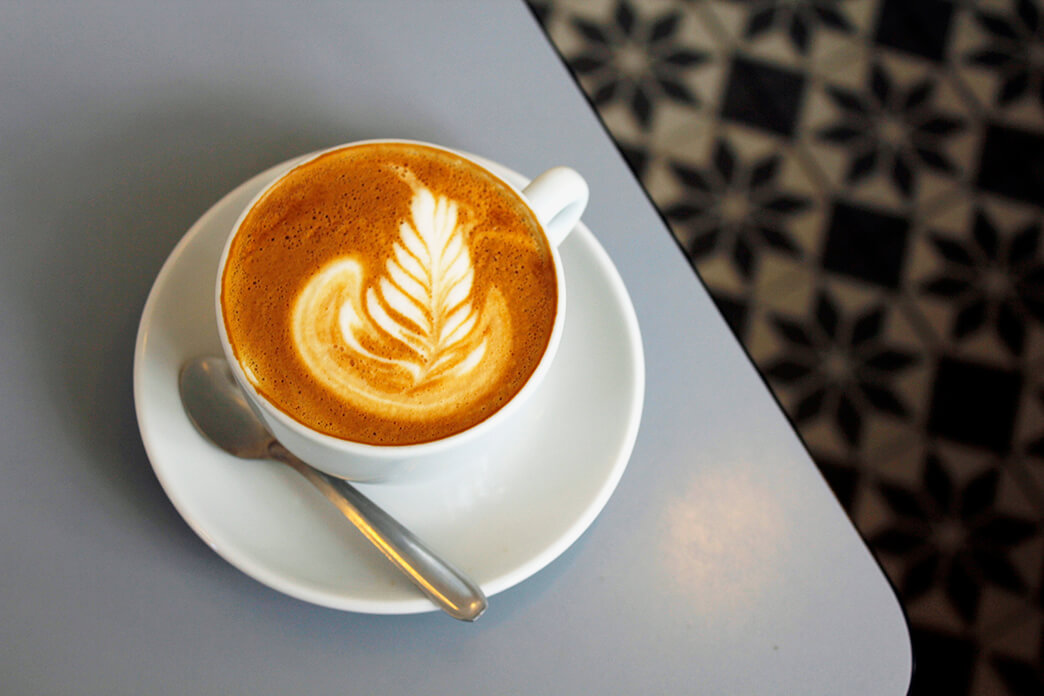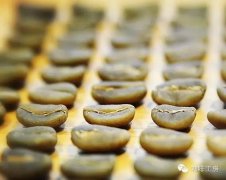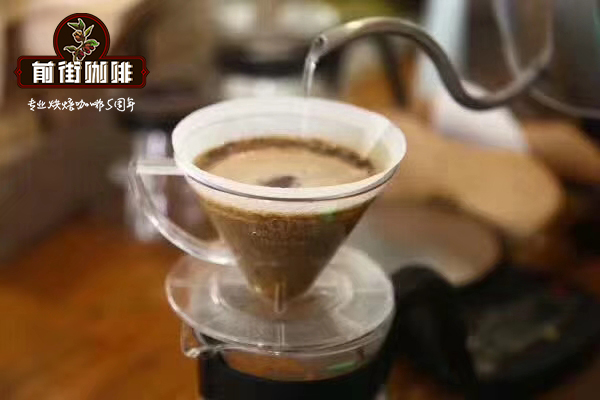Indonesia Gold Mantenin Wet planing Coffee Bean characteristic Story

For professional baristas, please follow the coffee workshop (Wechat official account cafe_style)
Suggestion of hand punching parameters
Hand-made gold manning. 15g powder, medium grinding (small Fuji ghost tooth cutter 4 grinding), KONO filter cup, 88-89 degrees water temperature, 30g water injection for the first time, steaming for 27 seconds, water injection to 105g water cut off, wait for the water volume of powder bed to be reduced to half, then water injection, slow water injection until 225g water, no water powder ratio at 1:15, extraction time at 2:00
Indonesian wet planing, also known as wet shelling Wet Hulling, also known as Giling Basah in the local language, is a traditional Indonesian coffee treatment method. Judging from the name alone, the Indonesian wet planing method is very similar to the wet treatment (water washing treatment). However, the cup flavor of the two treatments is very different. The coffee treated by the wet planing method is usually mellow and strong, with a very distinct personality.
Steps of Indonesian wet planing method
① removes peel and pulp and retains parchment and mucous membrane.
② tank fermentation
③ washing off mucous membrane
④ with parchment is sun-dried for 2-3 days to 20-24% moisture content.
⑤ scraped off the parchment
⑥ dries raw beans to 12-13% moisture content.
⑦, prepare for exit.
Why do you use wet planing?
a. Climatic reasons
The tradition of wet ploughing in Indonesia starts with the local weather. Humidity in Indonesia is between 70 and 90 percent all year round, typhoons continue, and in some areas, annual rainfall can reach as much as 2000mm. You know, raw beans are most afraid of Rain Water. How did Indonesia overcome such bad weather conditions to produce rich and mellow Mantenin coffee? That is to rely on wet planing.
In tropical climates, coffee takes an average of 2-3 weeks to dry. In such a humid climate in Indonesia, dry coffee has become a big problem. Coffee must take longer to dry, during which time the coffee still maintains a high humidity, making it easier for bacteria to soak into raw coffee beans.
In the process of ordinary washing, the drying process is carried out with parchment to protect raw beans from external damage to a certain extent. However, we can note that the wet planing removes the parchment for the final step of drying, so that the sun shines directly on the surface of the raw beans, causing the coffee beans to dry quickly, 2-3 times faster than washing.
b. economic performance
In the 17th century, Dutch colonists first introduced coffee to Indonesia. This group of colonists sought more and faster economic returns. Wet planing greatly shortened the time spent on the farm and greatly reduced the cost of labor. This coincides with the mentality of investors who pursue quick profits and reduce costs. This is also a reason to promote the wet planing method.
c. Defects and kuku kambing (Bauhinia)
When the parchment is removed by wet planing, the water content of coffee is still as high as 20-24%, while in general treatment, the water content of coffee is reduced to 10-12% before shelling. In the "semi-dry" state, parchment will adhere to the surface of raw beans, removing parchment is more difficult than "fully dry", and the shelling process requires more friction.
But on the other hand, "semi-dry" raw coffee beans are very fragile at this time, far less hard than "fully dry" raw beans, so beans are more likely to be squeezed and form a small gap. This is what we often call horseshoes or sheep's hoof beans (locally known as kuku kambing).
The super speed of wet planing also causes Manning to have higher defects. Employees will be arranged to carry out manual selection of defects in the processing plant, usually with DP (second hand selection) and TP (third hand selection). After three times of hand selection, Mantenin will be better than the second hand selection in the defect rate.
Summary:
To sum up the flavor of the wet planer, apart from those slight differences, we generally think that the wet shaved bean has the taste of soil, tobacco and chocolate, and the sour taste is called "low acid", mellow and dull.
Low acid comes from a shorter, weaker fermentation process and a longer drying time, if you forget the wet plane fermentation, turn back and have a look. As for the "earthy taste" of wet shaved beans, there are different opinions. Some people say that this is related to the beans selected in the wet planing-related producing areas (Tim & Kadim: with Rob pedigree), some people say that this is the result of the organic interaction between raw beans and the outside world, and some even say that it is because there are too many defective beans! Of course, there are a lot of...
Country: Indonesia
Grade: G1 3 times by hand
Company: PWN
Producing area: Sumatra
Treatment method: washing method
Altitude: 1100 to 1600 m
Flavor: baked toast, nuts, pine, caramel, herbs
The most famous producers of coffee in Asia are the islands of Malaysia: Sumatra, Java and Gary Mann. Sumatra Manning coffee from the Indonesian island of Sumatra is the most famous.
Mantenin coffee is produced in Lake dopa in Sumatra Province and Lake Tawa in Aceh. This is the famous "Shuangman of the two lakes". What the Shuangman of the two lakes have in common is that they are both thick and mellow. the difference is that the mantenin of Lake dopa is more stuffy, low and even has the smell of immortal grass, while Mantenin of Lake Tawa is more acidic, sometimes with a smell of cedar or wood.
During the Japanese occupation of Indonesia during World War II, a Japanese soldier drank mellow coffee in a cafe, so he asked the shopkeeper the name of the coffee, and the boss mistook him for asking where you were from, so he replied: Mandaining. After the war, the Japanese soldiers recalled the "manning" they had drunk in Indonesia. As a result, 15 tons of Indonesian coffee was transported to Japan, which was very popular. That's how Manning's name came out.
[Golden Manning]
Mantenin is the boutique of Indonesian coffee, while gold manning is the best boutique of Mantenin. Gold manning is a full-grained, clear and moist coffee carefully selected by hand, which is absolutely the most beautiful woman in the coffee. In fact, in order to improve the problem of Manning defective beans on the high side, the Japanese began to use carefully selected quality control a long time ago, after four manual selection to remove defective beans. Unfortunately, "golden mandheling", that is, gold manning, was registered as a trademark by the Indonesian coffee company Pawani, and gold manning became the exclusive property of PWN. PWN is the real sense of gold Manning, branded with PWN gold Manning, but also the guarantee of quality, pwn Huangman three manual screening, a machine selection, beans are very beautiful. PWN has registered the gold manning as a trademark, which means that only the gold manning produced by PWN can be regarded as a real "golden manning". Many of the beans on the market that are not made by PWN and hang the gold manning brand should actually be called boutique manning. "Golden Manning", it is not an old bean, but a product named by the company.
[the difference between Manning and Golden Manning]:
A brown friend asked, "I'm a beginner in coffee. What's the difference between this golden manning and Manning G1? I really can't drink it." For professional coffee diners and taste-sensitive coffee lovers, if you drink these two types of coffee at the same time, the result will be very obvious. Huang Man's sweetness and cleanliness, mellow, wild spice flavor are slightly better than G1, which is one of the reasons why Huangman is much more expensive than G1.
Palate: gold mantenin tastes cleaner than Lindong mantenin. Its original herbal, earthy and woody flavors are almost gone, but caramel is more sweet and fruity is brighter and more elegant. In general, Lin Dong Mantenin had better bake until the second explosion before coming out of the oven, which can effectively reduce the miscellaneous smell, but the gold Mantenin has good transparency and sweetness before or after the second explosion, and the baking interpretation space is wider.
Important Notice :
前街咖啡 FrontStreet Coffee has moved to new addredd:
FrontStreet Coffee Address: 315,Donghua East Road,GuangZhou
Tel:020 38364473
- Prev

The difference between authentic Indonesian PWN Gold Mantenin and other Mantenin in appearance and taste
For the exchange of professional baristas, please follow the coffee workshop (Wechat official account cafe_style) country: Indonesia level: G13 hand selected company: PWN production area: Sumatra handling method: washing method altitude: 1100mm 1600m flavor: baked toast, nuts, pine, caramel, herbal Asian coffee the most famous origin of Asian coffee is the island of Malaysia: Sumen
- Next

Sumatran coffee beans you don't know the Indonesian Manning story climate formation characteristics of the treatment method
For the exchange of professional baristas, please follow the coffee workshop (Wechat official account cafe_style) Indonesian coffee is mainly produced in Sumatra, Java and Sulawesi, among which Mandarin from Sumatra is the most famous. Manning is also known as Sumatran Coffee. Lake Tawa at the north end can be called Aceh Coffee or Lake Tawa Coffee. Lindong Lintong and Lake Toba
Related
- Detailed explanation of Jadeite planting Land in Panamanian Jadeite Manor introduction to the grading system of Jadeite competitive bidding, Red bid, Green bid and Rose Summer
- Story of Coffee planting in Brenka region of Costa Rica Stonehenge Manor anaerobic heavy honey treatment of flavor mouth
- What's on the barrel of Blue Mountain Coffee beans?
- Can American coffee also pull flowers? How to use hot American style to pull out a good-looking pattern?
- Can you make a cold extract with coffee beans? What is the right proportion for cold-extracted coffee formula?
- Indonesian PWN Gold Mandrine Coffee Origin Features Flavor How to Chong? Mandolin coffee is American.
- A brief introduction to the flavor characteristics of Brazilian yellow bourbon coffee beans
- What is the effect of different water quality on the flavor of cold-extracted coffee? What kind of water is best for brewing coffee?
- Why do you think of Rose Summer whenever you mention Panamanian coffee?
- Introduction to the characteristics of authentic blue mountain coffee bean producing areas? What is the CIB Coffee Authority in Jamaica?

